The Herald reported on April 22, 1940 – “The sale of the Central Union Bank building has been completed to J.L. Phillips Drug Company. The three story brick structure at the corner of Trade and Main Streets was purchased from the conservator of the Central Union Bank.”
City Directories and History: 1908 – National Union Bank, First trust and Savings Bank, 101.5 – J.H. Toole, Equitable Life Assurance, W.J. Roddey, Catawba Real Estate Co., Wilson and Wilson, City Attorney, J.T. Roddey, Mayor’s Office, Masonic Hall, 1922/23 – First Trust and Savings Bank, National Union Bank, S.R. Spencer, G.A. Beach, B.D. Kennedy and B.T. Dickson, Edward Westbrook – Notaries, Piedmont Barber Shop (Basement), W.J. Roddey and Co., Equitable Life Assurance Society, Miller and White, the Victoria Cotton Mill Co.,
Lot 1 North – Purchased from A. T. Black on December 31, 1852, by
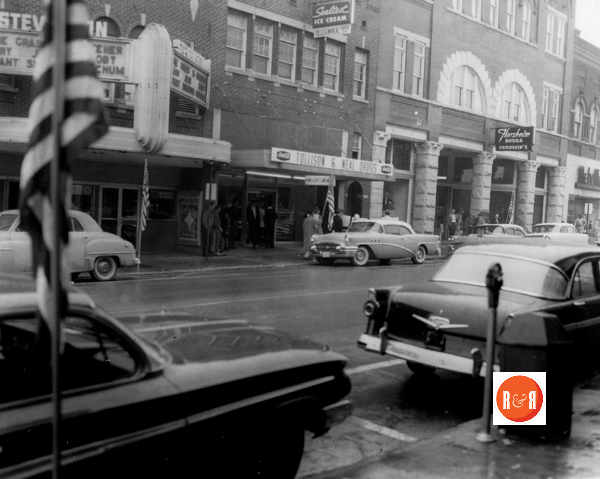
Image of Main Street showing the area between the National Union Bank and Friedheim’s Store; Stevenson’s Theater and Tollison Neal Drug Company. Courtesy of the Aiton Collection, ca. 1960. See ENLARGEABLE image under the MORE INFORMATION link.
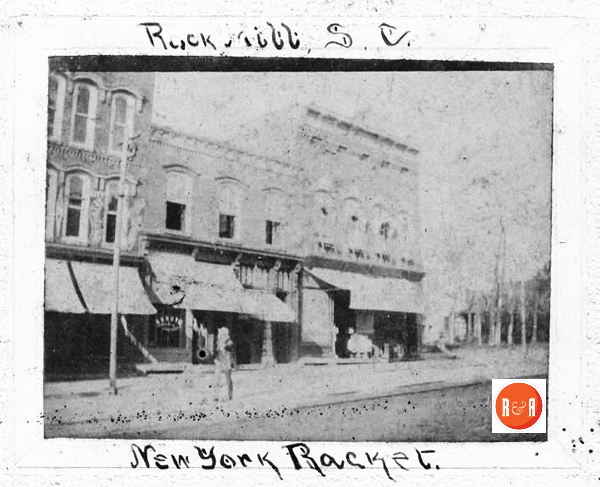
The Rock Hill Herald reported on Oct. 20, 1900 – “Mr. Wilson Moore and Mr. J.G. Sadler have changed places. Mr. Moore went to Cheste to take charge of the office of the New Chester Hotel and Mr. Sadler will return to Rock Hill and take Mr. Moore’s place with the New York Racket.” Images courtesy of the White – Presto Group / WU Pettus Archives (The Herald on Jan. 15, 1902 reported, “Mr. E.E. Cloud will move his wife and two children to Rock Hill, and has rented the house on Johnston Street recently erected by the Messers. Greene Family. Mr. Cloud is a native of Rocky Mount in Fairfield Co., S.C. and has lived in Lancaster for fifteen years. His business here has been successful and he is now moving his family here.”)
William P. Broach and Henry F. Broach, his son, for $125. They were owners and operators of Rock Hill’s first general store, which was in operation from 1852-53 until the Broaches moved to Mississippi about 1857-58. They built a frame storehouse on this lot. Thanks to the longevity of the carpenter and a newspaper editor with an eye to history, we know the name of the young man who sawed the wood and drove the nails for the village’s first mercantile establishment. John B. Proctor was born April 17, 1823, probably in Chester District, S. C. He lived until August 27, 1910. His wife was Sara Jane Fennell, born October 1, 1831, and died August 11, 1871. She was a daughter of John Bell Fennell, M.D., of Chester District, and his wife Eliza Simpson. Sarah Jane Fennell was an aunt of William Wallace Fennell, M. D., distinguished Rock Hill physician and surgeon. The building erected by John Proctor stood until the night of June 3-4, 1878, when it was destroyed in a fire that consumed a dozen or more business houses on Main Street and Front (later known as Depot or Railroad or Trade) Street. At the time the old building was burned, the land on which it stood was the property of Mrs. Catherine (Wylie) Baskin, mother-in-law of Captain W. Lyle Roddey, another of the town’s prominent bankers and merchants. The store building was occupied by J. C. Sharpe, a shoe merchant and grocer, in 1878. We should mention that the Broaches took in several partners in their various businesses. One of these men was Captain John Massey, whose residence stood in Ebezenerville. After the Broach family left Rock Hill, John Massey acquired the lot in question, and we should say again that Lot 1 North was bought from A. T. Black by the Broaches along with an adjoining scrap (Scrap A on the accompanying plat) just to the west of Lot 1.The front footage of this scrap of ground was about 50 feet. The remaining dimensions are in doubt owing to the irregular shape of the lot and also to a number of changes that were made in the width of the early streets in Rock Hill, particularly those located near the railroad. It appears that the original measurement of Lot 1 North was 103’ in width by 212’ in depth. With the addition of Scrap A, the front footage was probably 153’ all told. Because of the indeterminate width of Scrap A, we would not be surprised to learn that the front footage exceeded that given above. 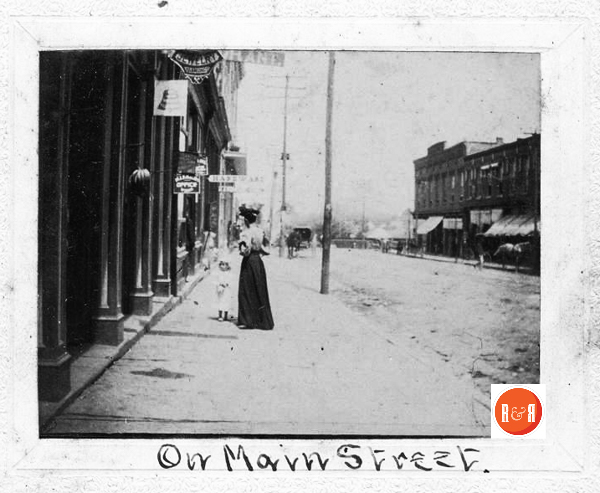
John Massey’s financial reverses after the Civil War forced him to sell Lot 1 North and Scrap A. He sold the larger part (132’ x 114’) to H. D. Stowe on September 14, 1867, and the smaller part to Captain W. L. Roddey on June 4, 1868. Massey greatly shortened the depth of the lots (to 114’) he sold so that the rear portion of the larger lot could be cut off and used to create an additional lot that faced Front (or Depot) Street. He learned this “trick” from the Broaches, who had already profited from this practice in the 1850’s as we shall soon see.
H. D. Stowe then proceeded to dispose of his property by selling a lot of 72’+ front footage to the merchant partners John R. London, Iredell Jones, and Allen Jones on
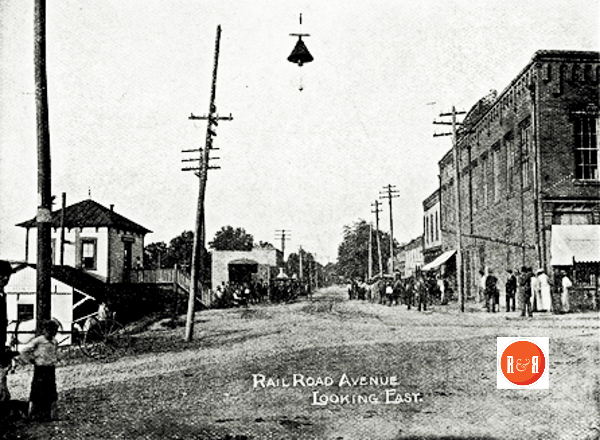 September 15, 1868. In passing, let us note that these gentlemen sold this lot on January 30, 1870 to J. Y. and William H. Bryce, in business as “J. Y. Bryce & Co.,” of Charlotte, N. C., and they in turn sold to Mrs. Catherine (Wylie) Baskin, aforesaid, on December 15, 1870. The property ultimately passed by inheritance to Mrs. Baskin’s daughter, Anna Cousart Baskin, wife of Captain W. L. Roddey. 7 And Mrs. Roddey deeded the lot to the National Union Bank on October 31, 1914. Located on this lot was the large three-story building of the bank mentioned, of which Captain Roddey was president and principal stockholder (61’4” on Main Street and 80’10” on Trade Street).
September 15, 1868. In passing, let us note that these gentlemen sold this lot on January 30, 1870 to J. Y. and William H. Bryce, in business as “J. Y. Bryce & Co.,” of Charlotte, N. C., and they in turn sold to Mrs. Catherine (Wylie) Baskin, aforesaid, on December 15, 1870. The property ultimately passed by inheritance to Mrs. Baskin’s daughter, Anna Cousart Baskin, wife of Captain W. L. Roddey. 7 And Mrs. Roddey deeded the lot to the National Union Bank on October 31, 1914. Located on this lot was the large three-story building of the bank mentioned, of which Captain Roddey was president and principal stockholder (61’4” on Main Street and 80’10” on Trade Street).
H. D. Stowe, on July 17, 1868, sold the remaining 60’ portion of his lot to John R. London. The depth of the lot was only 114’, as given above. Major London sold a portion of the property, with front footage of 30’, to J. M. Ivy, J. J. Roach, and Allen Jones on August 16, 1869. Colonel Ivy eventually acquired sole ownership of the lot. 11 At the time of his death several years later, his estate was declared bankrupt. A mortgage on the property was foreclosed by Williams, Black & Company of New York City, who dealt in cotton on a large scale. After a number of transactions related to the bankruptcy of Colonel Ivy, the lot was owned by R. T. Fewell and Co. Merchants. The property was next bought by a Rock Hill pharmacist and realtor, Dr. J. B. Johnson, on June 8, 1898. He operated a drugstore there, called Rock Hill Drug Company, for many years. Eventually, the lot became the last home of one of Rock Hill’s early movie theaters, the Stevenson Theater, which opened in January 1928.
Going back to the ownership of Major London, we record that he retained the other 30’ of the lot in 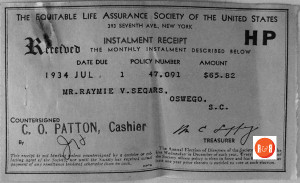 question for his own purposes. This western half of the lot acquired from H. D. Stowe measured 30’ by 114’.After Major London’s death in 1904 his widow, Mrs. Cammie (Rhodes) London continued to rent the property in order to supplement her income. She lived in Washington, D. C., until her death. For a number years S. E. True, operator of the New York Racket Store, rented the property. He sold out in 1902 to E. E. Cloud, who organized the Cloud Dry Goods Company at that site, which he rented from Mrs. Cammie (Rhodes) London. Major London died in 1904. On January 29, 1927 the building occupied by Cloud’s was destroyed by fire. When it was rebuilt, it was occupied by the J. C. Penney Company.
question for his own purposes. This western half of the lot acquired from H. D. Stowe measured 30’ by 114’.After Major London’s death in 1904 his widow, Mrs. Cammie (Rhodes) London continued to rent the property in order to supplement her income. She lived in Washington, D. C., until her death. For a number years S. E. True, operator of the New York Racket Store, rented the property. He sold out in 1902 to E. E. Cloud, who organized the Cloud Dry Goods Company at that site, which he rented from Mrs. Cammie (Rhodes) London. Major London died in 1904. On January 29, 1927 the building occupied by Cloud’s was destroyed by fire. When it was rebuilt, it was occupied by the J. C. Penney Company.
Let us now return to the transaction wherein H. D. Stowe sold a portion of his Rock Hill downtown property to Captain W. L. Roddey, on June 4, 1868. 15 The Roddey Trust Company, successor to Captain Roddey’s holdings, sold the lot in later years (in the twentieth century) to the Rock Hill Drug Company; and after that about 1919, the lot became the home of J. L. Phillips’ Drug Store. The two drug stores were connected by a door situated in the wall separating them.
We learn from the above data that the original Lot 1 North, together with Scrap A, ultimately came to encompass all the storehouses along that portion of East Main Street, running from Trade Street up to the western wall of the 1898 building of A. Friedheim & Brother, still standing.
[Information provided via Along the Land’s Ford Road – Vol. I, 2008 by William B. White, Jr.]
The Charleston News and Courier reported on June 7, 1890 – “Robertson Brother owned the Racket Store, opposite the Roddey Building and of course a good business is transacted by them. ” The paper also reported that say, “The oldest bank in Rock Hill is the First National Bank, which was charted in 1887. Officers and directors are: Capt. W.L. Roddey, Pres., W.J. Roddey, V.P., J.H. Miller – Cashier, R.L. Kerr – Teller, directors are: W.L. Roddey, John R. London, W.J. Roddey, J.E. Roddey, W.M. Frew, J.H. Miller, and A.F. Ruff.”
The Rock Hill Herald reported on Nov. 11, 1880 – “The photographer, Mr. R.L. Steel maybe found on the second floor of the Roddey Building over the store of T.C. Robertson and Company.”
The Rock Hill Herald reported on Feb. 24, 1881 – “Jones and Robertson have recently become associated in a general mercantile business in a new and beautiful showroom” Capt. Allen Jones and Dr. T.C. Robertson are part of a group wanting to start a textile mill at Landsford.
The RH Herald reported on Feb. 16, 1893 – “Dr. W.A. Pressley has moved his office to the room above the Saving Bank.”
The Yorkville Enquirer of Dec. 1, 1886 reported – “The sign of the 3C’s railroad has been received and place in the banking house of W.L. Roddey and Sons. Those who believe in signs will now believe that the railroad is coming. Your editor would prefer to see the railroad itself.”
The Herald reported on Jan. 4, 1893 – “Workman are engaged in putting a marble floor in the First National Bank.”
Robert S. Poag’s Savings Account book, 1930s – Courtesy of the Hicklin Collection: WU Archives, 2023
The YV Enquirer reported on Feb. 14, 1894 – “The First National Bank of Rock Hill has recently installed one of the most expensive safes in the state. The cost is $1,500. and the safe is made of the finest steel and has a time lock.”
The Herald reported on Jan. 25, 1896 – That the York Branch of Gadson Dry Goods Company has purchased the stock of Robertson’s Racket Store of Rock Hill, some of which was damaged in a fire. M.F. Jones and Tom Bloodworth are associated with the York Store. The New York Racket Store of Rock Hill continues to flourish, managed by True and Klutz.” An ad on Feb. 26, 1896 for the NY Racket Store, S.E. True manager. (The Record reported on Jan. 7, 1907, – “That Mr. S.E. True of Spartanburg visited Rock Hill Friday. He is conducting one of the largest dry goods and millinery stores in Spartanburg.”)
The Herald reported on Feb. 26, 1896 – “That Mr. O. H. Ellis of the Firm of Ellis and Brother, of Allendale, S.C. has rented the London Store room formerly occupied by Robertson’s Racket and will open about March 1st with a stock of general merchandise.”
On Jan. 4, 1896 the Herald reported – “The resignation of J. M. Cherry as cashier of the Savings Bank of Rock Hill and the appointment of R. Lee Kerr as his successor. Mr. L.C. Harrison will be an accountant and teller at First National Bank. Paul Workman will be bookkeeper at First National Bank.”
Early image showing the Confederate Reunion Celebration in downtown Rock Hill.
The Herald reported on June 3, 1896 – “The sale of the old store building of Jones and Robertson by the Clerk of Court was for the purpose of protecting the title. A. Friedheim and Brother, who own the property, were purchasers at $100.”
The Herald reported on Oct. 17, 1896 – “Mr. W. B. Howerton and his mother, have moved to Rock Hill from Greenville, S.C., occupying the A. E. Hutchison house on Main Street. Mr. Howerton will probably open up a grocery and tailors established in Major London’s store house.”
The Rock Hill Herald on May 29, 1899 reported on a major storm – “Damaged the scaffolding on Capt. Roddey’s new building on Main Street.”
The Herald reported on June 3, 1899 – “Capt. W.L. Roddey’s magnificent new building at the corner of Main and Depot Streets is completed and will present a very imposing presence.”
The Herald reported on July 19, 1899 – “The National Union Bank moved to the new building at the corner of Main and Depot Street on Monday, and yesterday morning the doors were opened to the public.”
The RH Herald reported on Sept. 9, 1899 – ” Mr. S.F. Gardner, watchmaker and jeweler, has leased one of the rooms in the National Union Bank building.”
The Herald reported on Oct. 4, 1899 – “J.H. Brown of Detroit and W.J. Warmsley of La. Missouri are at the Carolina Hotel. They plan on establishing an agricultural implement company in Rock Hill named Warmsley and Brown. Mr. Warmsley will be in charge of the Rock Hill operation and his family will move here soon. Mr. Brown is proprietor of a Company in Detroit which makes the Common Sense Harrow. They have leased a store room in the new Roddey Building facing Depot Street where they will display and sell their implements.”
The Herald reported on Oct. 18, 1899 – “Mr. W.C. Whitner and Co., of Anderson have moved their office to Rock Hill and now occupy a suite of rooms in the new Roddey Building. Mr. Frank C. Whitner is in charge of the office.”
The Herald reported on March 3, 1900 – “Mr. B.W. Creed has gone to Florida for business via the Rock Hill Harrow Company.”
The Herald reported on Oct. 6, 1900 – “Mr. E.T. Malbon, who sells candies on our streets, intends to establish a factory here and has rented vacant rooms in the National Union Bank building, next to the Bank.”
On Jan 8, 1902 the Rock Hill Herald reported, “Mr. E.E. Cloud has been with the Lancaster Mercantile Co., and will go to Rock Hill to purchase the New York Racket.”
The Herald reported on Dec. 17, 1902 – “The Catawba Power Co., has placed a safe weighing 4500 lbs., in its office located over the Union National Bank.”
The Rock Hill Record of June 11, 1908 reported that Mr. T.O. Flowers, Chief of the Fire Dept., suggests that the City Council go to work at once and have the old cisterns cleaned out and put into commission. One is in front of S.J. Kimball’s house, and the other on the National Union Bank corner. The cisterns were used in the past as a source of water for fire protection and they are needed as present for the system now does not provide adequate water.”
The RH Record reported on Nov. 16, 1908 – “The entire business of the Bank of Rock Hill has been merged with the National Union Bank of Rock Hill. Mr. B.C. Barnes has been cashier of the Bank of Rock Hill and will be working for the National Union Bank. The Pres. of the Bank of Rock Hill, Mr. R.T. Fewell, found his interests outside so large that he could not devote enough time to the bank. He occupies a prominent position in the textile business.”
The RH Record reported on June 3, 1909 – “Mr. John R. Barron is moving his office from the rear of Blumberg’s store to the basement of the National Union Bank.”
The Rock Hill Herald reported on Jan. 12, 1916 – “At a meeting of the stock holders of the National Union Bank, W.J. Roddey, who has been Pres. for sixteen years, asked not to be re-elected and Ira B. Dunlap became President. Mr. Roddey said he had been an active bank officer for 32 years. Mr. Dunlap was also elected Pres., of the First Trust and Savings Bank.”
The Rock Hill Herald contained an ad on April 24, 1916 – Stated, “For fire insurance see us at the First Trust and Savings Bank, S. Reid Spencer – Cashier and W.B. Klugh – Asst. Manager of Insurance Deptartment.”
The Record reported on Jan. 3, 1927 – “Mr. R.B. Robinson of Lancaster has purchased the stock of Cloud Dry Goods Company at auction.”
The Record reported on Jan. 21, 1927 – “Saturday morning was the most disastrous fire in downtown Rock Hill in thirty years. It began in the Manhattan Cafe in the rear of the Rock Hill Drug Company, spread to the London Building (Cloud’s Store), the Rock Hill Drug Company and the J.L. Phillips Drug Company. Dr. J.E. Massey lost his instruments and library. The office of Dr. Blackmon, Strait, Massey, Hay, Walker, and Stevens, over the drug store were burned. Lyle Whitner lost all of his office equipment, located over Cloud’s Store. Frank D. Greene, the real estate agent saved the records in his office. John A. Black saved some of the records in his office. Flames endangered the National Union Bank, which also houses the Equitable and other private offices. On the other side, walls of the A. Freidheim and Brothers grew red hot but the fire did not penetrate.“
RODDEY BUILDING AND CAROLINA HOTEL – Contributed and written by Paul M. Gettys
One of the original lots on Rock Hill’s Main Street was sold by Alexander Templeton Black to John Roddey on November 22, 1853. Since Roddey was the surveyor for the first plat of Main Street, it is possible that he took the lot in payment for his services. Within three months of the purchase, a store opened on this lot, known as Roddey, Wylie and Moffatt. John Roddey, known as “Squire” Roddey, also operated a store at Coates’ Tavern in eastern York County. By 1858, two of John Roddey’s sons, David Clarkson and Thomas E. Roddey were operating the Rock Hill store under the name D. C. Roddey & Brother. Another brother, William Lyle Roddey, bought into the firm in 1859. The Civil War had a great impact on the family, as Thomas E. Roddey died during the war, William Lyle Roddey was severely wounded, and David C. Roddey died shortly afterward in 1866. After his recovery, Capt. William Lyle Roddey resumed the mercantile business and operated with a number of partners and under a number of names, including W. L. Roddey & Company, Roddey Mercantile, and Roddey-Poe Mercantile.
All these stores operated on the same site. Little is known about the store buildings. Presumably, the original store was enlarged over the years into a larger wood frame building. William Lyle Roddey became one of the leading entrepreneurs of Rock Hill, investing in real estate, banking, textile mills, and civic improvements. At some point, the Globe Hotel was created at the Roddey Mercantile building, along with offices for some of his other enterprises.
A great fire swept through the south side of Main Street in 1887, taking with it the entire Roddey complex. After the fire, Capt. William Lyle Roddey erected a new building on the same lot in 1888. An article from the Yorkville Enquirer described the new building. Erected at a cost of $18,000, it was a three-story brick building which housed a number of enterprises. On the first floor, the W. L. Roddey & Company store was one of Rock Hill’s leading mercantile establishments. Also on the first floor were the First National Bank offices, the post office, the Enterprise Telephone Company office, and the Carolina Hotel reception area and office. The Carolina Hotel occupied the upper floors, and featured 32 rooms complete with all modern amenities, such as electric call bells, speaking tubes, and baths. The article deemed that the Carolina Hotel “compares favorably with any hotel in the state outside Charleston.” Mr. Howell Cobb was the proprietor of the hotel. Mr. Roddey acquired hunting rights on 12,000 acres of land for the use of the hotel’s guests.
“On the northwest corner of Main and Laurel streets was the two-story residence of Dr. and Mrs. J.J. Hagins and his niece, Miss Annie Dunn, who was the milliner for the Cloud Dry Goods Company. The Hagins lot adjoined the Friedheim family cemetery, which faces Laurel Street. Doctor Hagins was Rock Hill’s first optician. …. Going east from the Bank building, we find next door the Cloud Dry Goods Company. Before it was Cloud’s it was the New York Racket Store, run by S. E. True. The owner of Cloud’s was Mr. E. E. Cloud. The J. C. Penney store was here later. Next east to, Cloud’s was the Rock Hill Drug Company, owned and operated for many years by Dr. Boney Johnson. Between this building and Friedheim’s was the building that was later occupied by J. L. Phillips Drug Company.” (The Herald contained an ad on Jan. 18, 1883 for J.J. Hagins and Co., agents for agricultural implements. It is unclear as to the relationship of these individuals.)
[Robbins – White Tour History]
An article in the Evening Herald (May 3, 1952) describes the later history of the Carolina Hotel. In 1895, it was operated by A. H. Greene, and Gib Greene was the room clerk. The Carolina later became known as the Southern Hotel, and J. K. Scoggins, Jr. was a well-known manager. During the Great Depression of the 1930s, the Roddey family lost control of the property. In 1941, the hotel was bought by F. D. Marshall, Sr. It was later owned by his son Robert Marshall and was known as the Hotel Robert Marshall. It was leased and operated by Herman Baruch and later W. T. Kincaid. In 1952, Theodore A. Baker took over the management and began remodeling the hotel. The urban renewal program undertaken by the City of Rock Hill resulted in the demolition of the Roddey Building, one of Rock Hill’s landmarks.
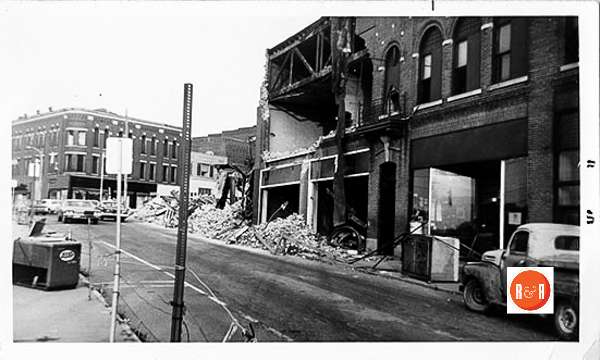
Looking north on Trade St., the Union National Bank – Equitable Building can be viewed at the top of the street, ca. 1970 Courtesy of the Azer Collection – WU Pettus Archives Collection
The Herald reported on Sept. 28, 1898 – “Yesterday Capt. Roddey awarded the contract for the erection of the National Union Bank on the corner of Main and Depot Streets. It will be four stories, including a cellar. The masons will be on the fourth floor. There will be a tower at the corner and offices on the third floor.”
The Herald reported on Jan. 15, 1902 – “Mr. E.E. Cloud will move his family from Lancaster to Rock Hill soon, to go into the mercantile business. He has rented the house on Johnston Street recently erected by Ms. Greene. (121 Johnston Street – in 1908). (The 1908 City Directory states, that Ernest E. Cloud operated a drygoods and clothing store at 107 East Main and 108 Railroad Ave., (N. Trade St.,) His wife was Jessie W. Cloud.
The Rock Hill City Directory of 1913-14 states that this was the location of Dr. David Lyle’s medical office.
The Herald reported on March 20, 1915 – “That the BPOE Lodge #1318 was formally instituted with forty-seven charter members. The ceremony was conducted in the Masonic Hall. The group then retired to the Elks Club, formerly the Palmetto Club.”
The 1915-16 store ledger of the Jno. McElwee Co., listed Louis S. Hay and Catherine as account holders. His office is at 109 E. Main and they resided at 219 Saluda Street. Also here the Rock Hill Drug Company held an account with the McElwee Company. (J.B. Johnson, Pres. and J.L. Phillips, V.P.)
The Herald reported Sept. 7, 1929 – “J.P. Robinson took over management today of the Quality Barber Shop on the corner of East Main and Trade, succeeding W.O. Wright, who will devote his entire time to his ladies parlor. Mr. Robinson formerly was with E.S. Kirk at the Southern Hotel Barber Shop.”
Facebook Comment: via Johnny Strait 3/16 – “My Mom, a registered nurse, worked on the third floor of this CREEPY building in the late 1950’s – early 60’s. She worked for “old” Dr. Frank Strait who I guess was in his 60-70’s. He shared office space with Dr. William Blackmon. My Mom was Buddie Strait (we were not close relatives of Dr. Strait). Dr. Blackmon’s nurse was Lavenia Linburger, (she went to work for Dr. Frank P. Gaston after being Dr. Blackmon’s nurse). After Dr. Strait retired, my Mom went to work with Dr. Newton G. Quantz (the nephew of Dr. Strait), on Wilson Street near Oakland Avenue. My Grandaddy, Roy Strait, hunted and fished with all three doctors.”
Click on the More Information > link found below the picture column for details on J.M. Ivy of Rock Hill, S.C.
Stay Connected
Explore history, houses, and stories across S.C. Your membership provides you with updates on regional topics, information on historic research, preservation, and monthly feature articles. But remember R&R wants to hear from you and assist in preserving your own family genealogy and memorabilia.
Visit the Southern Queries – Forum to receive assistance in answering questions, discuss genealogy, and enjoy exploring preservation topics with other members. Also listed are several history and genealogical researchers for hire.
User comments welcome — post at the bottom of this page.
Please enjoy this structure and all those listed in Roots and Recall. But remember each is private property. So view them from a distance or from a public area such as the sidewalk or public road.
Do you have information to share and preserve? Family, school, church, or other older photos and stories are welcome. Send them digitally through the “Share Your Story” link, so they too might be posted on Roots and Recall.
User comments always welcome - please post at the bottom of this page.
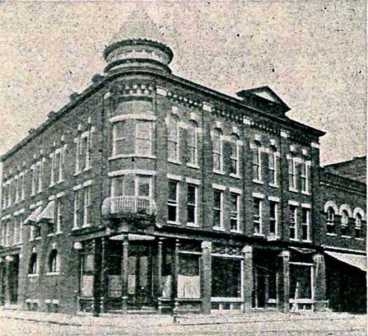
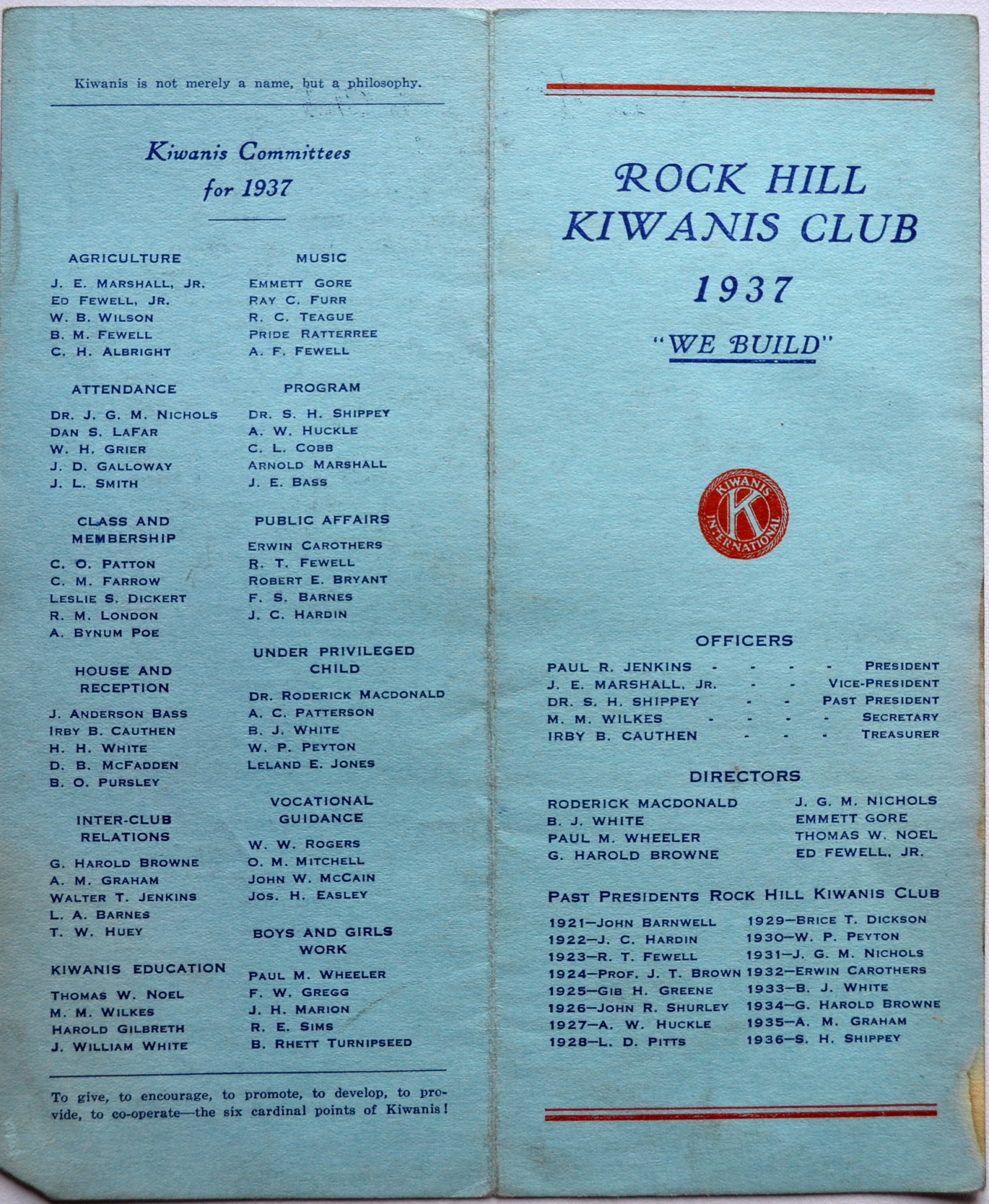
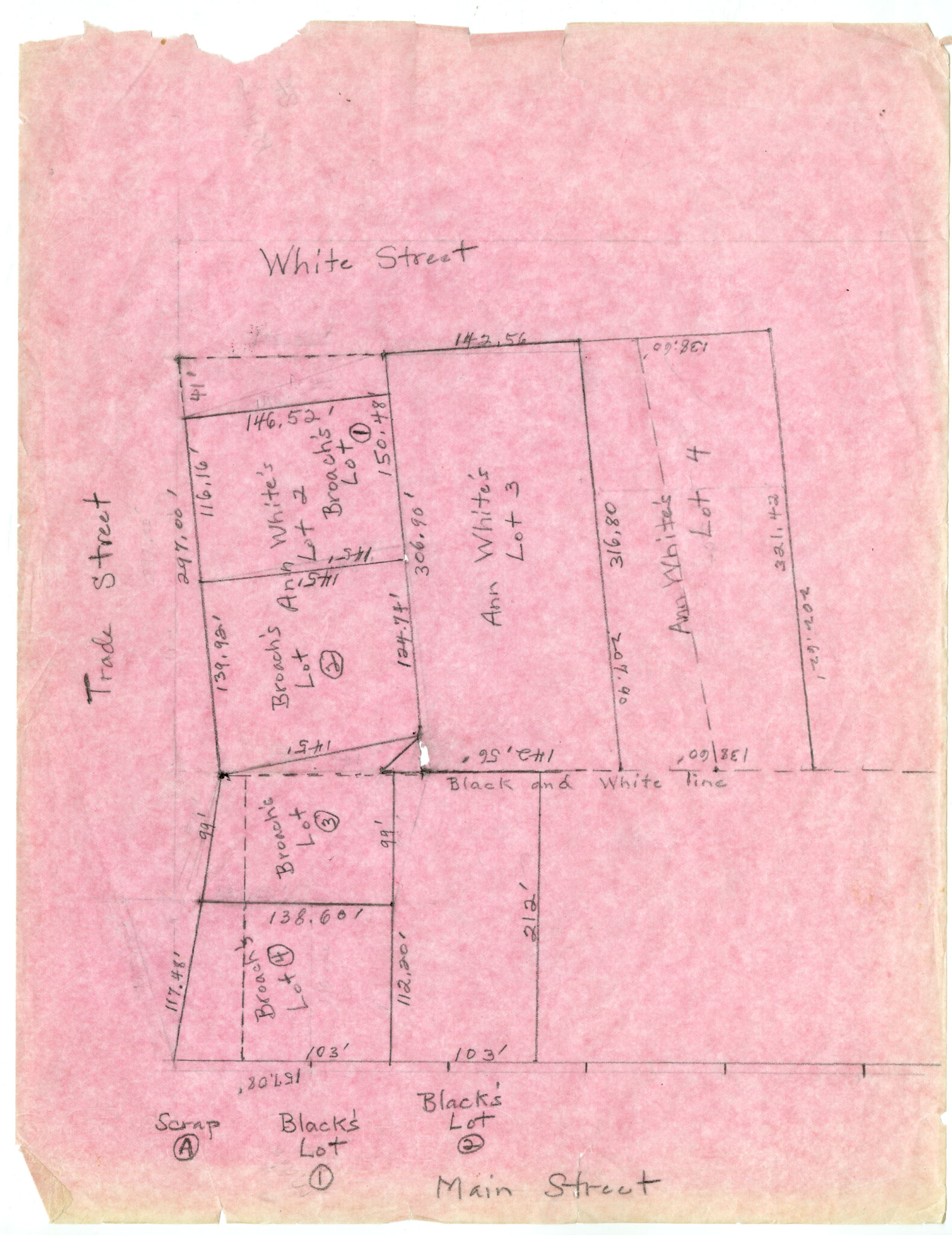
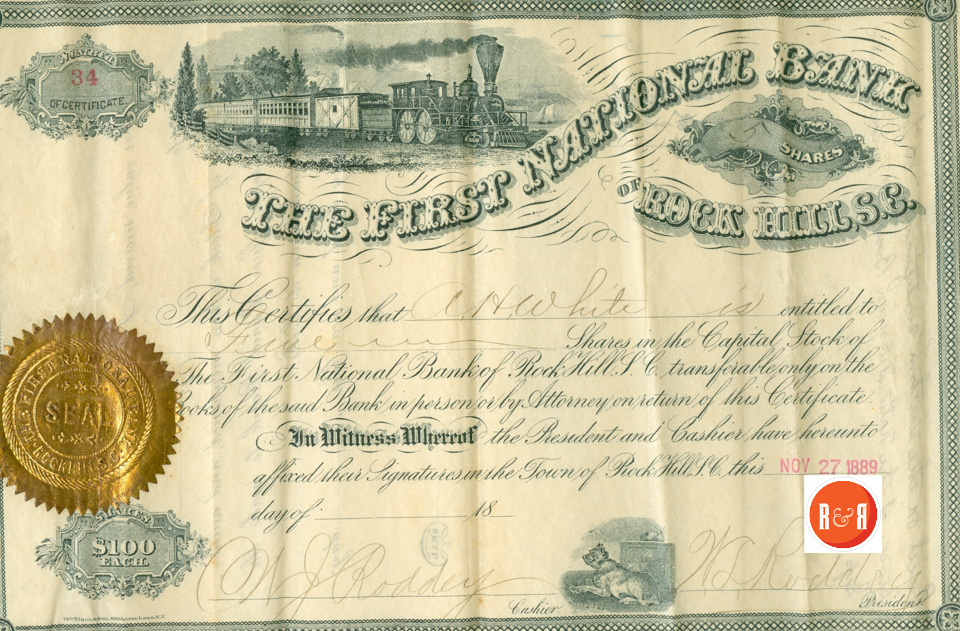
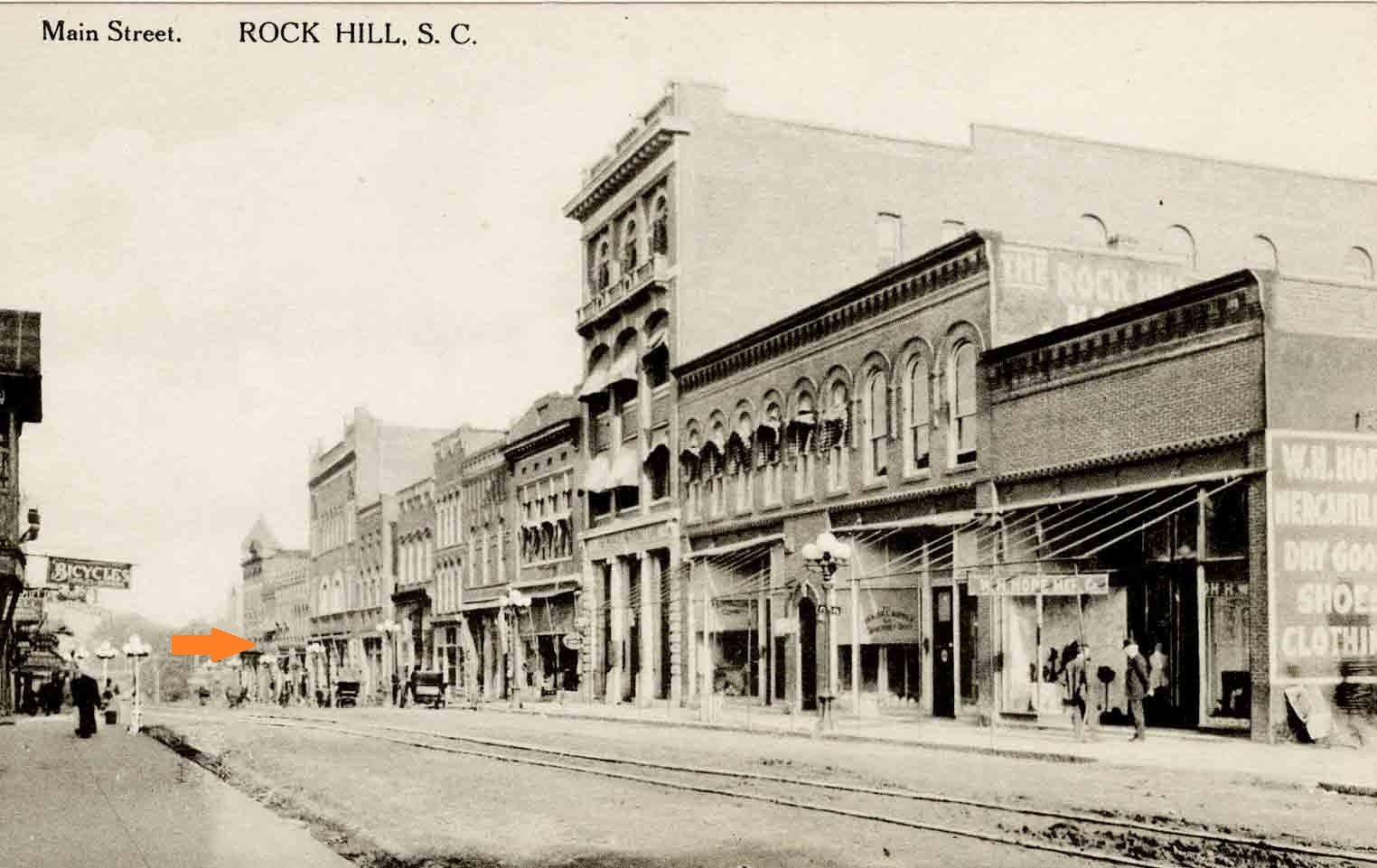
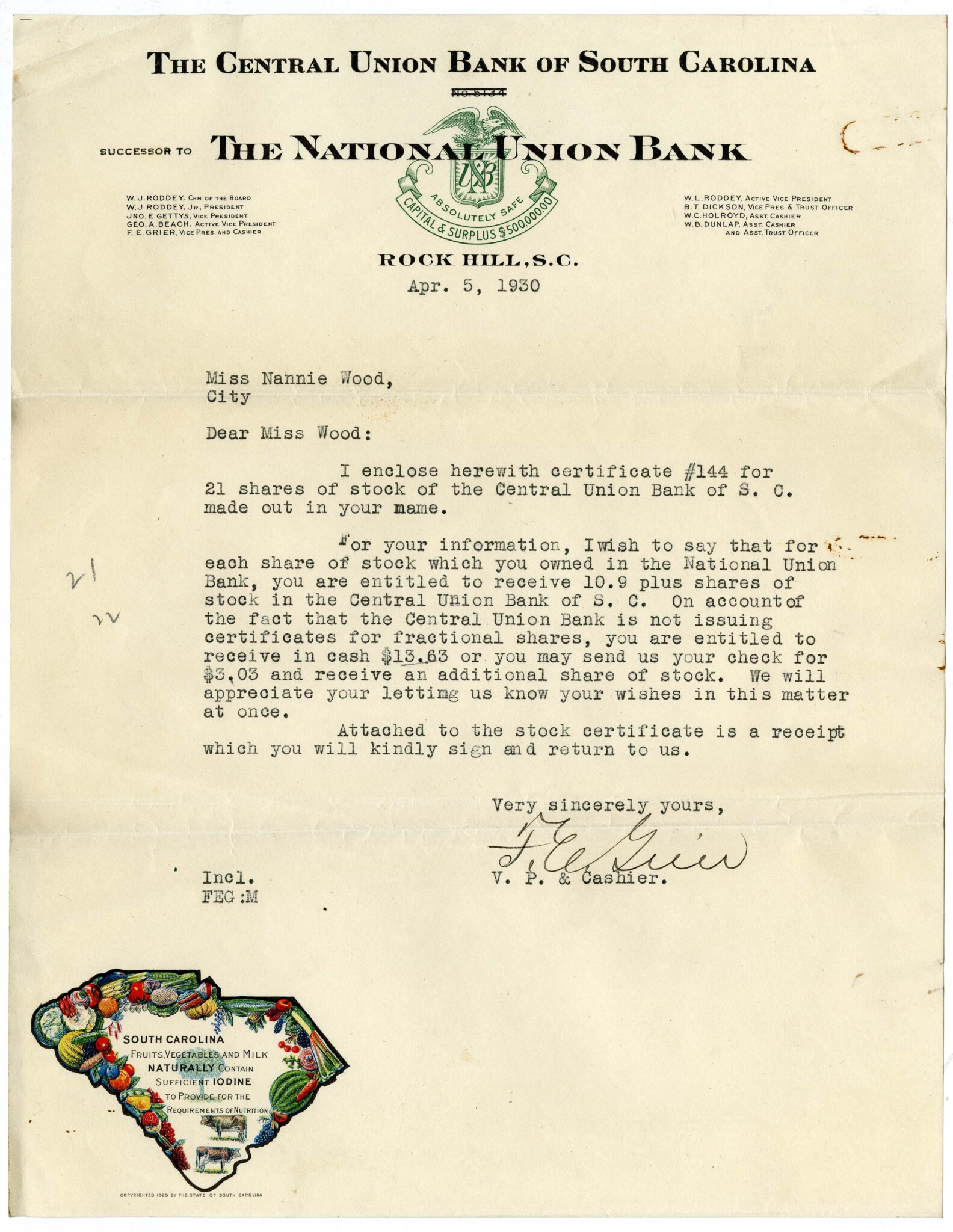
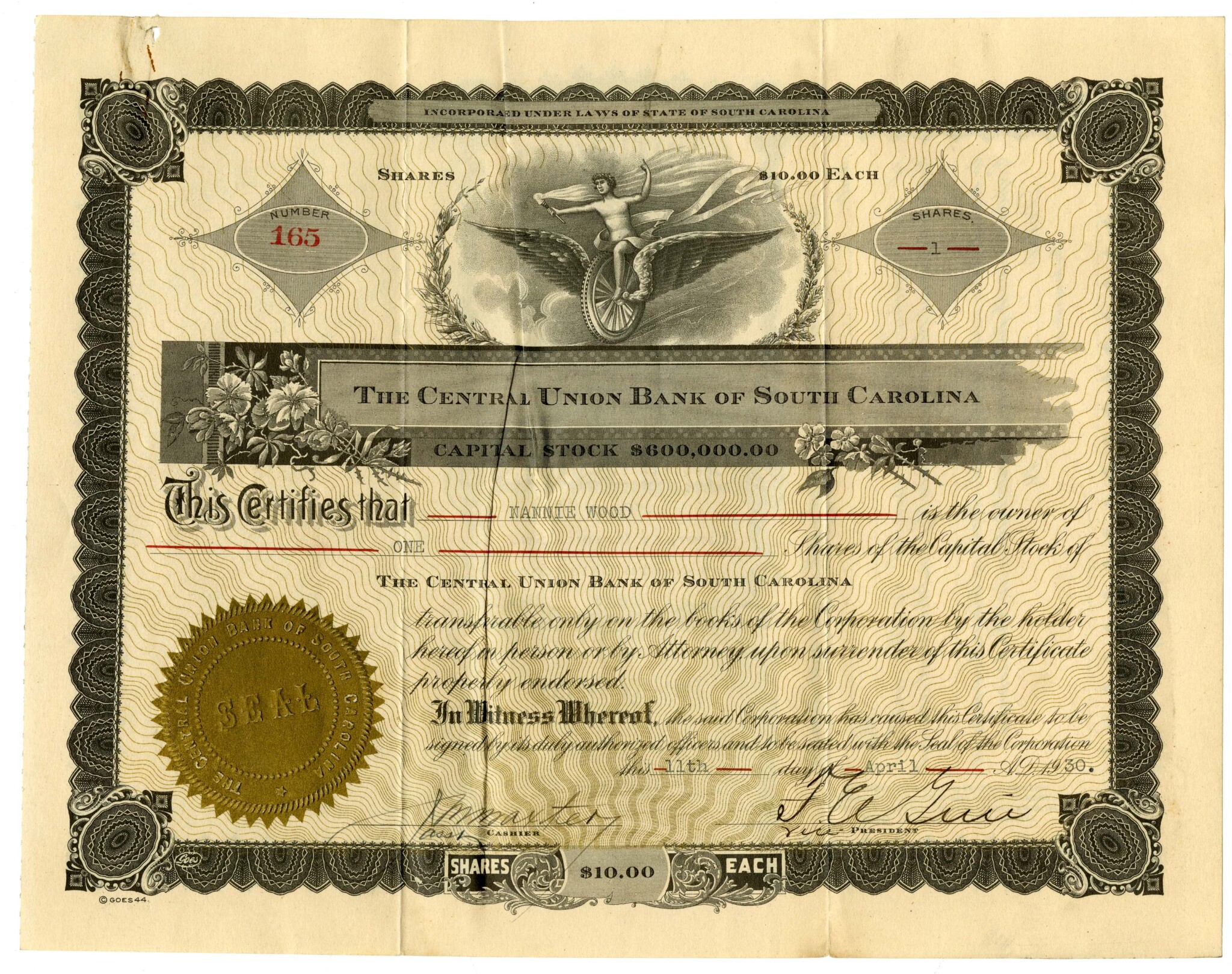 Click on image to pan and zoom.
Click on image to pan and zoom.
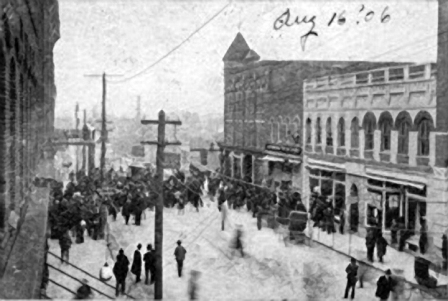
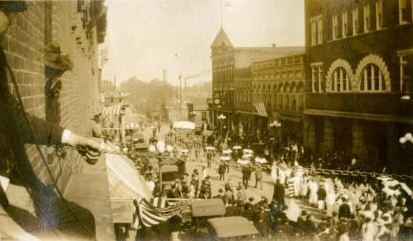
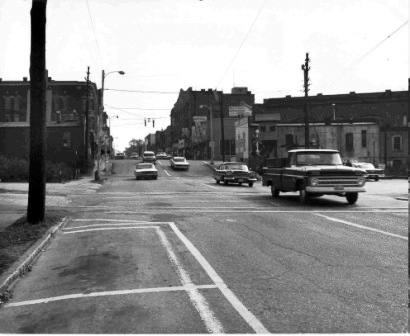
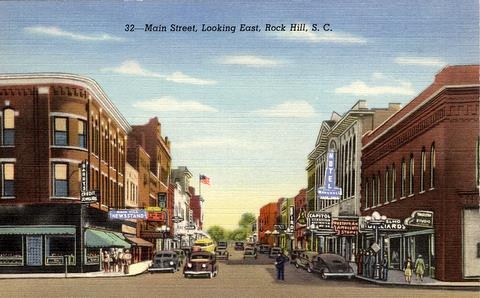
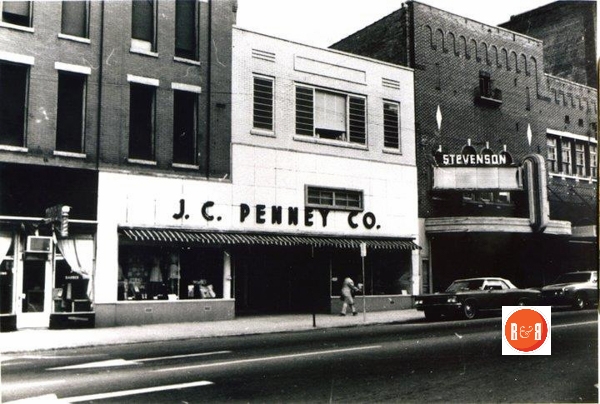

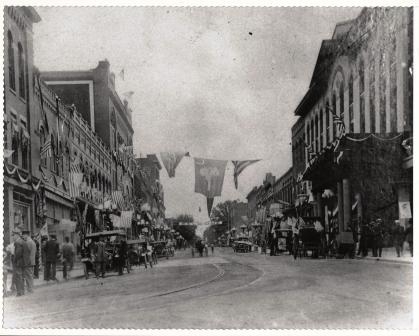
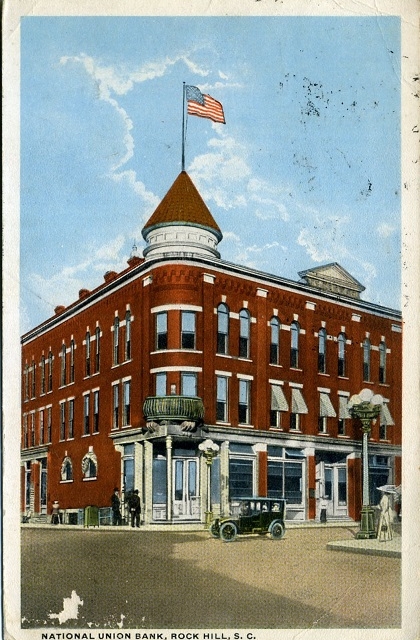
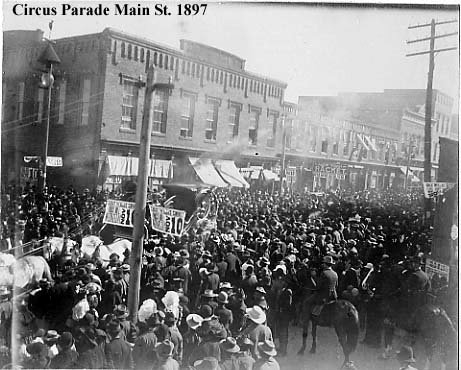
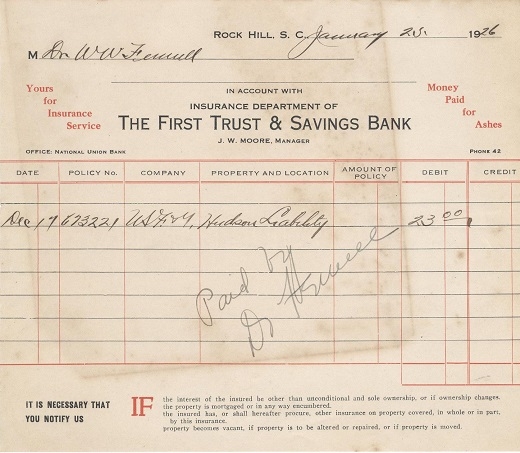
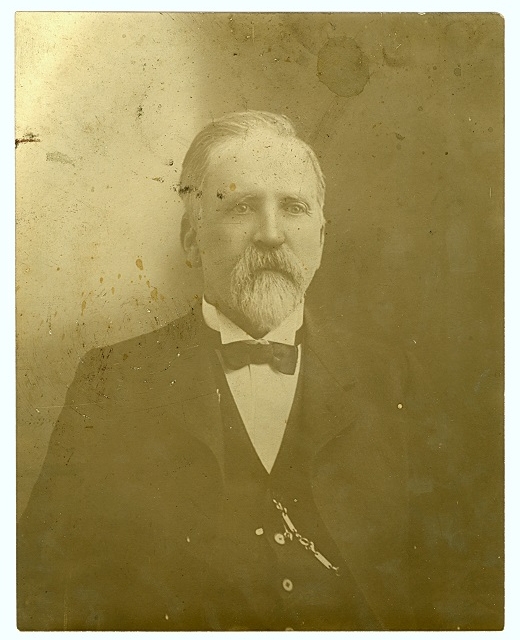
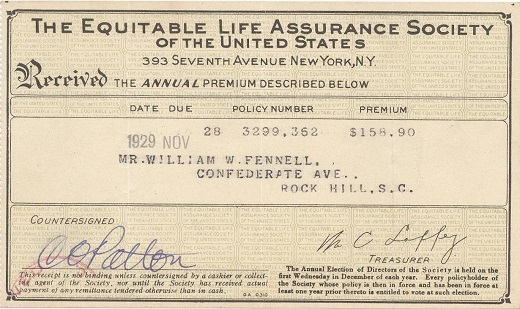
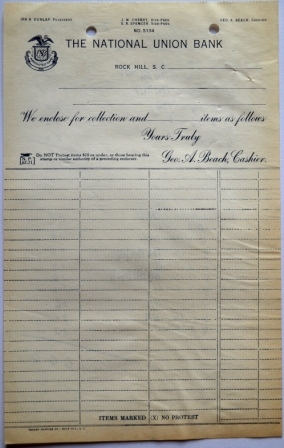
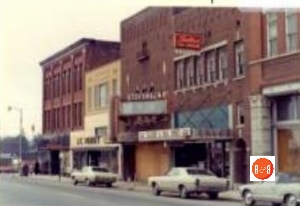

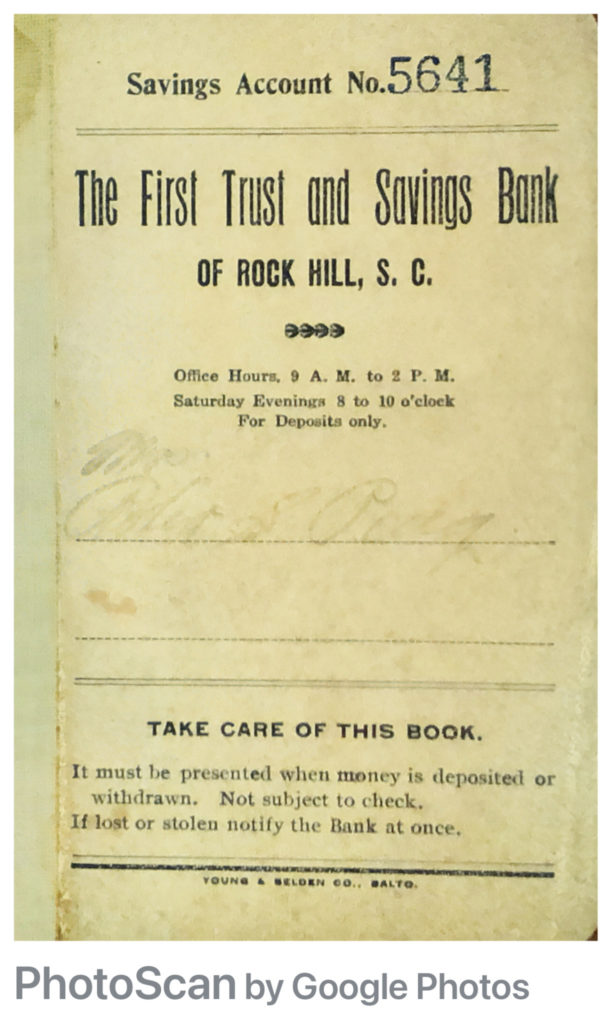
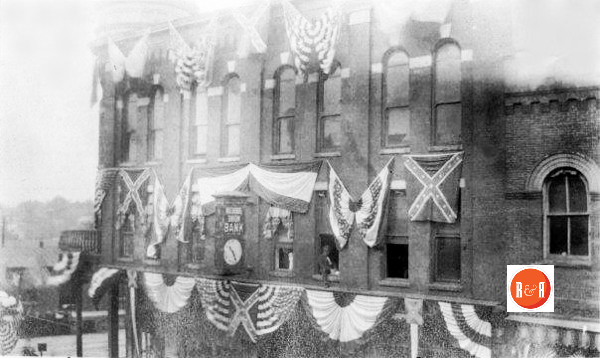


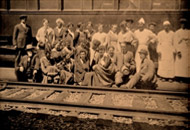
Share Your Comments & Feedback: